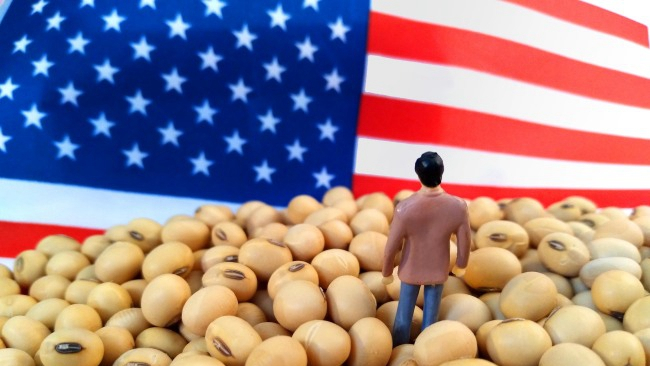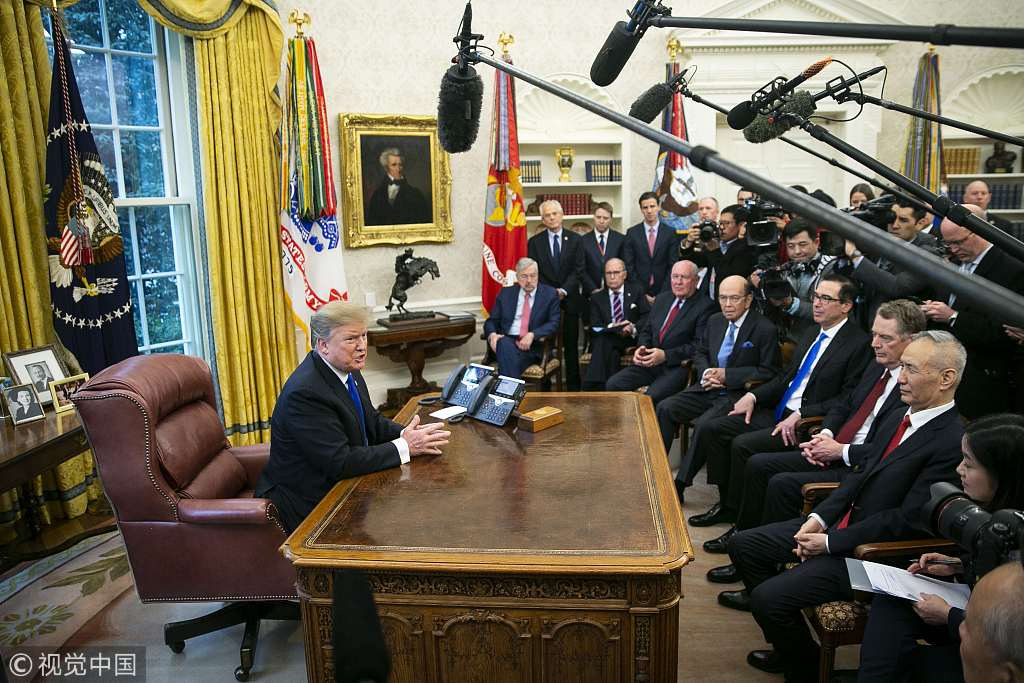
Opinion
08:27, 25-May-2019
China's market with 1.4 bln consumers too big for the U.S. to contain

Editor's Note: The following is an edited translation of the commentary from the Chinese-language "Commentaries on International Affairs" published on China Plus on May 24, 2019. The article reflects the author's opinion, and not necessarily the views of CGTN.
A slew of foreign companies have quickly responded to reports that they have severed their ties with Huawei, after the United States government imposed restrictions on trade with the Chinese tech firm.
These include Japan's Panasonic and Toshiba, as well as Britain's mobile operator EE. Germany's Infineon has also issued a clarification after reports that said it had cut supplies to Huawei led to a slump in its share prices.
American trade restrictions on Huawei are unpopular with many multinationals because their business interests are being severely damaged. And it is impossible for Washington to contain the vast Chinese market and its 1.4 billion consumers.
The moves by these companies are understandable, as they have probably learned a lesson from the case of the French rail transport solution provider Alstom. The company's global vice president, Frederic Pierucci, was arrested by the FBI when he was in New York in April 2013. He became an economic hostage, held by the United States in its attempt to dismember Alstom.
Alstom, once known as the pearl of the French industry, eventually fell into the hands of General Electric. For more than a decade, the United States has used similar means to suppress and even break apart a number of large European multinationals.

U.S. President Donald Trump (L) speaks during a meeting with Liu He, China's vice premier, in the Oval Office of the White House, Washington, DC, U.S., February 22, 2019. /VCG Photo
U.S. President Donald Trump (L) speaks during a meeting with Liu He, China's vice premier, in the Oval Office of the White House, Washington, DC, U.S., February 22, 2019. /VCG Photo
Washington is now trying to use the same tricks on Chinese companies. Will Huawei's suppliers succumb to pressure from Washington, or even become accomplices? If they don't, will they become the next target of the United States?
To suppress China, the United States is using tariffs to wage a trade war. It is also trying to mislead public opinion with false information. But moves such as these won't suffocate China's economy.
In the first four months of this year, the country's actual use of foreign capital increased by 6.4 percent year-on-year, and the total value of its imports and exports rose by 4.3 percent. Trade between China and other Belt and Road countries is growing by 9.1 percent, 480 basis points higher than the overall growth rate for trade.
And the second Belt and Road Forum for International Cooperation witnessed the signing of over 100 bilateral cooperation documents involving more than 64 billion U.S. dollars of capital. The diversification of China's international markets has increased the ability of its economy to weather risks. The global industrial chain, which was structured according to the demands of all countries and to the laws of the market economy, is something the United States is incapable of dismembering.
In the meantime, the annual average contribution of domestic demand to GDP growth surpassed 100 percent between 2008 and 2017, and domestic demand has become the driving force for China's economic development.

A U.S. farmer walks through his soy fields as China's retaliatory tariffs hit the U.S. soybean market. /VCG Photo
A U.S. farmer walks through his soy fields as China's retaliatory tariffs hit the U.S. soybean market. /VCG Photo
Moreover, China's dependence on foreign trade has fallen to around 33 percent. This indicates that a more powerful home market is coming into being as China pushes ahead with supply side structural reforms amid increasingly strong demand. This, in turn, facilitates the country's industrial upgrading and helps to improve the competitiveness of Chinese enterprises.
No sensible entrepreneur would belittle China's huge consumer market. The country also boasts some 110 million businesses, including more than 34 million enterprises, which are themselves major consumers. Taken together, these two forces of consumption provide a lot of room for high-quality domestic development at a time when the country faces external challenges.
Whereas China's dependence on foreign trade has been decreasing, the dependence of the United States on international markets remains quite high. China's market was consuming 60 percent of the soybeans grown in the United States, until the United States government hiked tariffs, which led to a sharp fall in soybean exports to China.
American farmers are turning to countries such as Japan, Mexico, and Nigeria to make up the shortfall in purchases from China, but the volume of soy that can be exported to those countries can barely replace the share of sales lost in China's market.
American soybean growers are lamenting that it's increasingly unlikely that they'll recapture China's lucrative market. That's part of the reason why a report released on Thursday by the International Monetary Fund says that the additional costs resulting from the higher tariffs are being borne almost entirely by American importers and consumers.
The United States is shooting itself in the foot, and the American people should ask their politicians in Washington whether they can really find another market of 1.4 billion consumers for their country's soybean farmers, aircraft builders, and chip makers.
(If you want to contribute and have specific expertise, please contact us at opinions@cgtn.com.)

SITEMAP
Copyright © 2018 CGTN. Beijing ICP prepared NO.16065310-3
Copyright © 2018 CGTN. Beijing ICP prepared NO.16065310-3